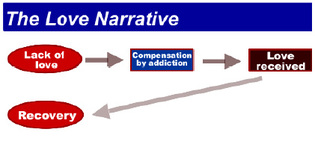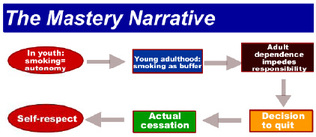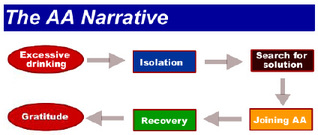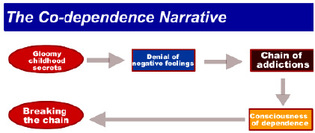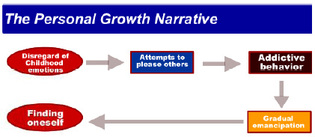The Wager Vol. 5(19) – First Person, Singular: Narrative Analysis
Imagine a room full of compulsive gamblers in recovery. If you were to ask each person to tell his or her personal story of addiction and recovery, you would likely hear as many different stories as there were gamblers. The task of analyzing such autobiographical data is daunting. However, just as there are often underlying patterns in a data set of numbers, there are often patterns in a data set of words.
Narrative analysis is a technique of qualitative analysis that can be used to uncover these patterns. Developed primarily by anthropologists to mine their ethnographic data, narrative analysis looks for reoccurring themes and subplots. Hanninen and Koski-Jannes (1999) used narrative analysis to find commonalties among the stories of 51 Finnish subjects who had recovered from addiction to alcohol, multiple drugs, binge eating, smoking, sex, or gambling. The authors identified the logic of each narrative; that is, how each individual explained his or her transition from addiction to recovery. They found five distinct story-patterns, which th labeled the AA story, personal growth story, the co-dependence story, the love story, and the mastery story. The diagrams below presents the logical progression of each story-pattern.
What does it mean that 51 seemingly unique stories of addiction can be reduced to 5 reoccurring patterns? Many anthropologists believe that storytelling is a learned behavior; that is, the manner in which we relate events is determined by culture. If this is the case, did the subjects absorb these patterns from their clinicians and sponsors? Consider a new member of a 12-step program who hears others tell their recovery stories according a certain narrative pattern. It is possible that he or she will adopt that pattern as a model for relating the events of his or her own recovery story.
Unfortunately, the authors do not stratify their sample by addiction, so we cannot know whether the narrative patterns of recovering gamblers are different than those of subjects recovering from alcohol or drug dependence.
Since even the best-designed quantitative study fails to adequately relate individual stories of addiction, suffering, and recovery, narrative analysis should not be overlooked by researchers seeking a rich understanding of pathological gambling.
References
Hanninen, V, & Koski-Jannes, A. (1999). Narratives of recovery from addictive behaviours. Addiction, 94, 1837-1848.
